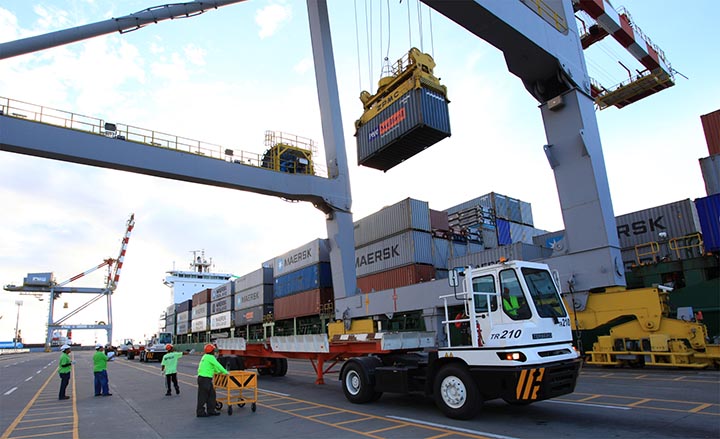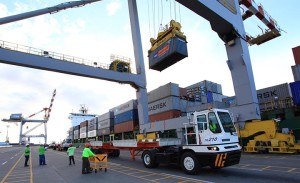

Container traffic at the ports of Batangas and Subic sustained its upward climb, a trend seen to continue further this year, prompting port operators to intensify capacity building and equipment deployment.
As of July 2015, port operator Asian Terminals Inc. (ATI) said the Batangas Container Terminal (BCT) handled 81,000 twenty-foot equivalent units (TEUs) of international containers, up by more than 230% compared to the same period last year.
ATI attributes volume expansion to the robust flow of cargoes in the Calabarzon area (Cavite, Laguna, Batangas, Rizal, and Quezon) and nearby regions. BCT in 2014 handled 98,310 TEUs, up 792% from 11,020 TEUs in 2013.
Subic port, on the other hand, serviced 73,000 TEUs in the first seven months of the year, 158.9% higher than the 28,191 TEUs posted in the same period in 2014. The highest monthly volume reached for the year so far was in January when 14,892.75 TEUs were handled.
Subic and Batangas’ container traffic was given a boost last year after the Manila City government imposed a daytime truck ban causing massive port congestion in Manila, subsequently pushing shippers to look for alternative gateways.
In 2013, utilization at Batangas and Subic was only 4.2% and 5.6%, respectively, according to the Department of Transportation and Communications. Batangas’ annual capacity is 350,000 TEUs while Subic’s is 600,000 TEUs.
Foreign chambers of commerce and other business groups have been pushing for greater use of Batangas and Subic ports even before the Manila port congestion crippled the supply chain last year.
Both ports now eye higher annual volumes for 2015, with ATI looking at 150,000 TEUs for Batangas and Subic aiming to handle 120,000 TEUs. Shipping lines calling the two ports have increased since 2014, with Batangas having two regular weekly callers and Subic with five.
In a press release, ATI said BCT also posted record-high terminal productivity in July 2015, exceeding 30 gross moves per hour (GMPH) for the first time since it started in 2010. GMPH is a measure of how many containers are moved by cranes from ship to shore in an hour. Efficient handling of vessels at berth results in faster ship turnaround and quicker deliver of cargoes to consignees, ATI noted.
It may be recalled that ATI successfully completed its systems upgrade at BCT last year, equipping Southern Luzon’s gateway with a more comprehensive operations infrastructure powered by Navis Sparcs, resulting in greater port efficiency and productivity.
Additionally, more cargo handling equipment including reach stackers, empty loaders and internal transfer vehicles have been deployed at BCT. The cooperation and discipline of consignees in picking up cargoes within the designated free storage period and the support of port authorities have also helped maintain optimal terminal operations, ATI said.
Encouraged by this robust volume and the region’s high growth potential, ATI said it is eyeing to further grow capacity and productivity at BCT. Already in the pipeline are the extension of BCT’s quay length, deployment of additional ship-to-shore and rubber-tired gantry cranes, and acquisition of more container handling equipment.




